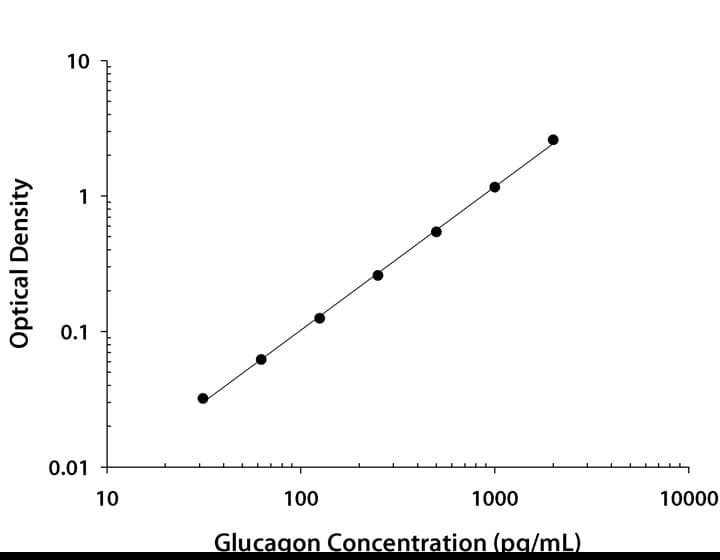 全部商品分类
全部商品分类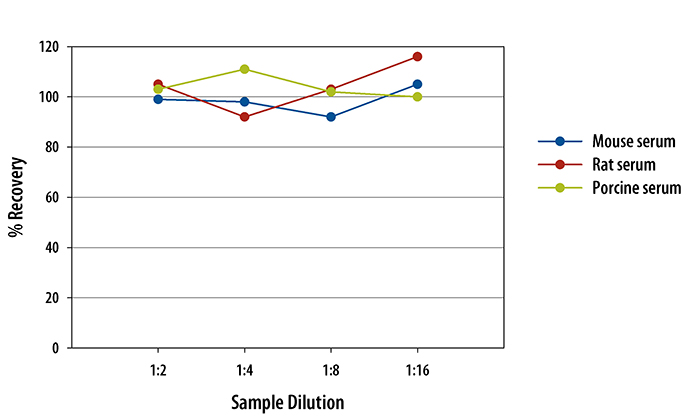



 下载产品说明书
下载产品说明书 下载SDS
下载SDS 用小程序,查商品更便捷
用小程序,查商品更便捷


 收藏
收藏
 对比
对比 咨询
咨询Product Summary
Recovery
The recovery of Glucagon spiked to levels throughout the range of the assay in various matrices was evaluated.
| Sample Type | Average % Recovery | Range % |
|---|---|---|
| Cell Culture Media (n=4) | 98 | 91-108 |
| Human EDTA Plasma (n=4) | 98 | 86-107 |
| Human Heparin Plasma (n=4) | 96 | 88-100 |
| Human Serum (n=4) | 102 | 95-111 |
| Mouse Serum (n=2) | 99 | 92-106 |
| Porcine Serum (n=2) | 97 | 91-107 |
| Rat Serum (n=1) | 93 | 86-101 |
Linearity
Scientific Data
Assay Procedure
Refer to the product- Prepare all reagents, standard dilutions, and samples as directed in the product insert.
- Remove excess microplate strips from the plate frame, return them to the foil pouch containing the desiccant pack, and reseal.
- Wash and aspirate the plate a total of 2 times with Wash Buffer prior to assay.
- Add 150 µL of Assay Diluent to each well.
- Add 50 µL of Standard, control, or sample to each well. Cover with a plate sealer, and incubate at room temperature for 3 hours.
- Aspirate each well and wash, repeating the process 3 times for a total of 4 washes.
- Add 200 µL of cold Conjugate to each well. Cover with a new plate sealer, and incubate at 2-8 °C for 1 hour.
- Aspirate and wash 4 times.
- Add 200 µL Substrate Solution to each well. Incubate at room temperature for 30 minutes. PROTECT FROM LIGHT.
- Add 50 µL of Stop Solution to each well. Read at 450 nm within 30 minutes. Set wavelength correction to 540 nm or 570 nm.
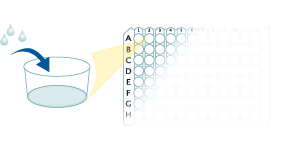


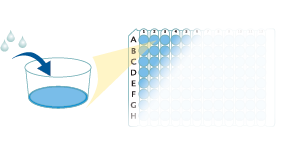
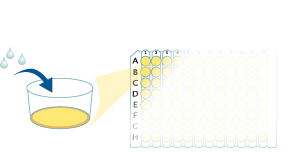
Glucagon Quantikine ELISA Kit Summary

Background: Glucagon
Glucagon is a 29 amino acid (aa) peptide produced by the pancreas that plays a critical role in glucose metabolism and homeostasis (1-4). The Glucagon precursor mRNA is expressed by alpha cells ( alpha -cells) of the pancreas, L cells of the intestine, and in the brain (1, 2). Only the pancreatic alpha -cells express the prohormone convertase PC2, also called PCSK2, which is required to produce Glucagon (2). Intestinal L cells instead express the prohormone convertase PC1, which processes the precursor to the Glucagon-overlapping peptides glicentin and oxyntomodulin. L cells also produce two Glucagon-like peptides, GLP-1 and GLP-2 that are derived from the same Glucagon precursor and influence glucose metabolism, but do not share any common sequence with Glucagon (1, 2). The aa sequence of the mature Glucagon peptide is identical in human, mouse, rat, pig, dog, horse, cow, sheep, and Xenopus.




